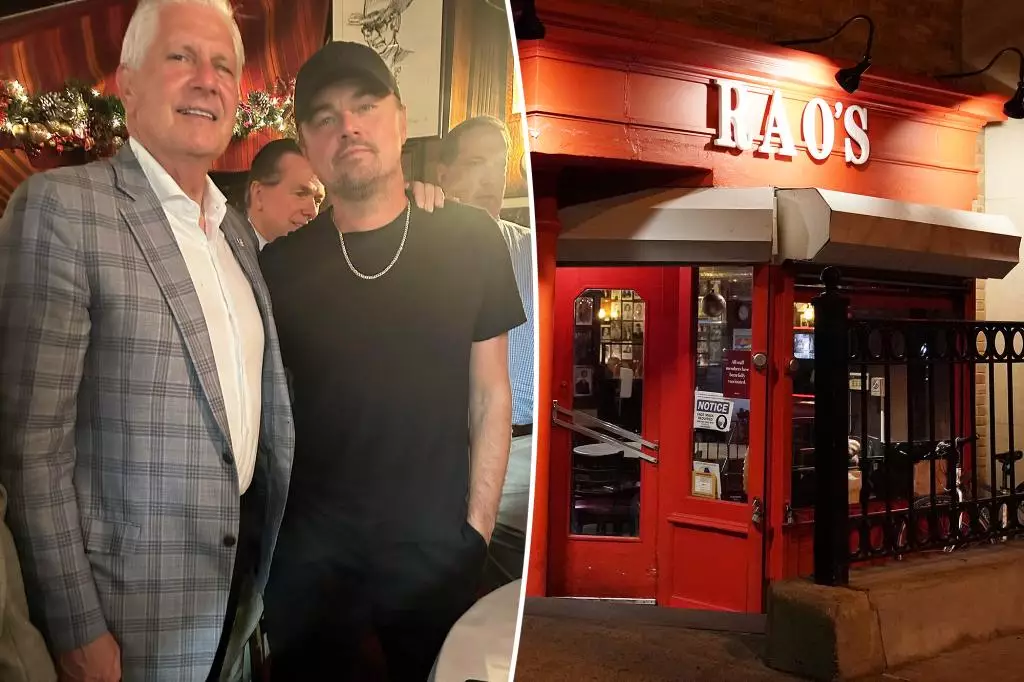Recently, Hollywood heavyweight Leonardo DiCaprio was spotted at Rao’s, an iconic East Harlem restaurant that often has a waitlist as tough to penetrate as Fort Knox. This celebrity encounter is significant not only for fans and diners lucky enough to squeeze into Rao’s that night but also for the powerful undercurrents of the gathering. Accompanied by Nassau County Executive Bruce Blakeman and entrepreneur Andrew Murstein, DiCaprio’s presence highlighted the intersection of celebrity culture, local politics, and the film industry’s economic impact in New York.
Observers reported that DiCaprio was in a remarkably jovial mood, enthusiastically engaging with fans and capturing the moment with dozens of selfies. His ability to connect with people on such an intimate level is refreshing, especially in an era where many celebrities often appear distant or untouchable. The sight of a superstar immersed in candid conversations and cheerful interactions underscores the magnetic aura that DiCaprio carries—an essence that draws people in and makes them feel valued.
Politics and the Pursuit of ‘Hollywood East’
The evening took an intriguing turn with Blakeman pushing a bold vision for Nassau County: transforming it into “Hollywood East.” This ambitious dream aligns with the lavish financial potential of film production in the region, particularly when factoring in the $533 million economic boost attributed to local productions. The reminder that portions of DiCaprio’s film “The Wolf of Wall Street” were filmed in Nassau is a testament to the area’s cinematic allure. The proposal to harness this cinematic magnetism could be a game changer for local business and culture, effectively merging art and economic strategy.
Such endeavors often require a titanic effort, and Blakeman’s determination suggests he recognizes the wealth of talent—and opportunities—that New York still has to offer. However, one must wonder whether his vision will have the requisite support from both politicians and the film industry alike, especially in sustaining momentum beyond a single star-studded dinner.
The Local Scene Meets Global Fame
While the focus on DiCaprio was palpable, the dinner’s guest list also included notable figures from media and film. The presence of Bo Dietl, DiCaprio’s co-star in “The Wolf of Wall Street,” and ABC Radio’s Sid Rosenberg indicates that this was no ordinary meeting. It was a confluence of creativity and influence—a gathering that could pivotally shape local narratives and foster greater collaboration between Hollywood and New York’s vibrant artistic community.
Interestingly, attendees couldn’t help but notice the conspicuous security presence accompanying Blakeman. This contrast reveals the complex social fabric woven around political figures versus those in pop culture. While DiCaprio’s presence often summons protective measures, it appears Blakeman required the extensive security, raising questions about the scrutiny public figures face versus the freedoms enjoyed by artistic icons.
Hollywood vibes are undeniably alluring, but the real magic may lie in uniting local and international cultures in a seamless, collaborative dance. This evening’s gathering at Rao’s might have served as a microcosm for that very aspiration: blending the glitz of film with the grit of local politics to spark innovation and creativity.

